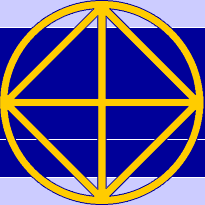Book Presentation
"Book of Rituals"
by Dr. Ekkirala Krishnamacharya

This book is a concise treatise on the Rituals of the Wisdom Religion. The work deals with the sacramental value of initiations and the changes brought to the student thereby. The dawn of the science of rituals is traced to the dawn of man on this earth and this is because the dawn of man itself is the result of an organized ritual of the unseen forces of nature ever at work.
Content: The Science of Rituals - its Purpose; The Role of Symbolism in Rituals; Operative and Speculative Rituals; World Rituals – Classification; The Vedic Rituals: 1. Zodiacal Mysteries; 2. Planetary Rituals 3. The Fire Ritual 4. Consecration Rituals; 5. The Introductory and Concluding Rituals; 6. The Soma Ritual; 7. The Animal Sacrifice; 8. The Horse Ritual; 9. Man Sacrifice and all Sacrifice; 10. The Significance of the Cremation Rituals; Puranic Rituals; Various Traditions among the Puranic Rituals: a. The Tradition of the Dying God; b. The Tradition of the eternal fight between the Serpent and the Eagle; c. The Tradition of Man Vanquishing the Serpent; d. The Tradition of Bricklaying and Building the temple. Tantric and Agamic Rituals; Rituals and Mystery Compared; Language and the Concept of the Vedic Hymns; The Future of the Rituals; The Content and Form of the Future Rituals.
The World Teacher Trust - Visakhapatnam, India 1990
- Book order information
- About the Author
- PDF
- We have a few English copies to distribute for free.
Sample:
Chapter 12: The Content and Form of the Future RitualsThe externalisation of the Hierarchy includes the renovation of the ancient rituals as an important item. This is much discussed in the book "The Externalisation of the Hierarchy" written by A. A. B. The Masters and the disciples who have undertaken the activity of the second and seventh rays of initiation will work for this renovation especially. Various schools of initiation will be founded under different names having different orders of rituals, the content being the same. There will be a definite attempt to transcend the differences of the so many outward religions which formed the non-essential part of the spiritualistic path. Such differences are bound to crop up through centuries from time to time due to the differentiation of the work of the Masters. Many of the ritualistic orders remained above religion from times immemorial though they are temporarily modified by the various exoteric religious missionaries and their political effects. The rituals of the medieval ages and the present age are partly coloured by the local religious influences and partly remain original in their nature. The inner content of the rituals which forms the theme of the life of man as a drama remained the same and the names of characters changed according to the local religious nomenclature. The leading rituals of the future age exist as spiritual dramas above religion and form a meeting place of the religion, philosophy and science of man. Hence there will be a wider scope for the people of many walks of life to be initiated into the orders. In the light of the above study one can easily visualise the set of rituals used in future. The scheme will be as follows:
(1) The initiation ritual.
(2) The Theme of the Birth of the Father as Son through the Mother.
(3) The Journey of the Soul.
(4) The Story of Death and Rebirth.
(5) Zodiacal and Planetary Dramas.
(6) The "Day" of Creation.
(7) The Allegories of Number and Form.
The first set of initiation rituals contains three mysteries of oral tradition. The first deals with the training and harnessing of the intellectual and emotional powers of man and man gaining mastery over them. The theory of analogy and the law of correspondences will be revealed to the student in a new light. The student is made to find his place in the universe and the ultimate fitness of things.
The mystery of the father and son deals with the holy trinity and the Brahma-Saraswati mystery of the Vedic and Puranic lore. The causeless cause, its glory and the consciousness that exists in the glory are respectively represented by the father, the mother and the son concepts. The secret of creation before it is reflected upon mind and matter as the secret of reproduction will be inculcated in all details. The first stage of seerhood is thereby conferred upon the student and he begins to grow and permeate into his objective presence through his consciousness until he meets the consciousness of the spiritual sun (this becomes the subplot of the son going out into the wider world in quest of his father).
The Journey of the Soul contains the essentials of the theme of the Mahabharata and the Bible. The Exodus of the sons of Israel in quest of the Promised Land and the Journey of the five sons of Pandu in quest of their lost kingdom are synthesized to form a grand mystery play. Climbing up the hills, conducting pilgrimages and undertaking sea voyage in the arc with the aid of the great fish and undertaking air travel on the face of the Sun after assuming the form of the eagle taking up the serpents will all be enacted in an organized way.
All the sublime aspects of the various stories of the dying Gods will be edited and rearranged into a drama. This contains the story of Savitri and Satyavan and the story of the crucifixion and raising. Portions of the rituals from the Book of the Dead and the stories of Isis and Osiris will be synthesised. This ritual serves as a sacrament to give a second birth (spiritual birth) which is above death to the student.
Here also the drama of the day is introduced and the whole play had the background of the rotating wheel and the planetary angels coming and going partaking the chorus and the circle dance. The stories of various Prajapathis (Patriarchs) form part of the Drama. There will be twelve zodiacal rituals conducted during the twelve months of the year and each having a different theme. Of course all the themes are now found as descriptions and episodes in the Mahabharata and the Book of Revelation of the St. John and St. Mark Gospel of the New Testament.
The day of creation is a profound allegory dealing with the journey of man along the wheel of life from one birth to the next. All the divisions of the day (the 24 inch scale, the four divisions of six hours each etc.) are found in a dramatised form. The whole set up is now found in the opening chapters of the Mahabharata wherein the life of a man is allegorised into the story of a disciple.

 Circle of Good Will
Circle of Good Will Contact
Contact
